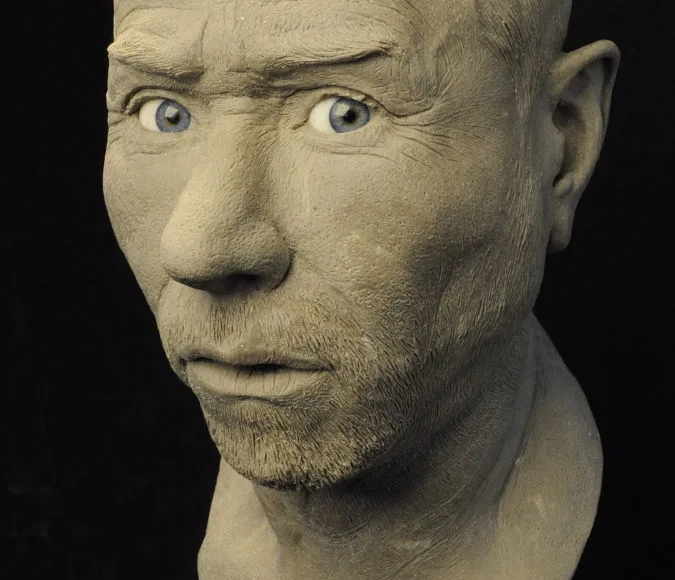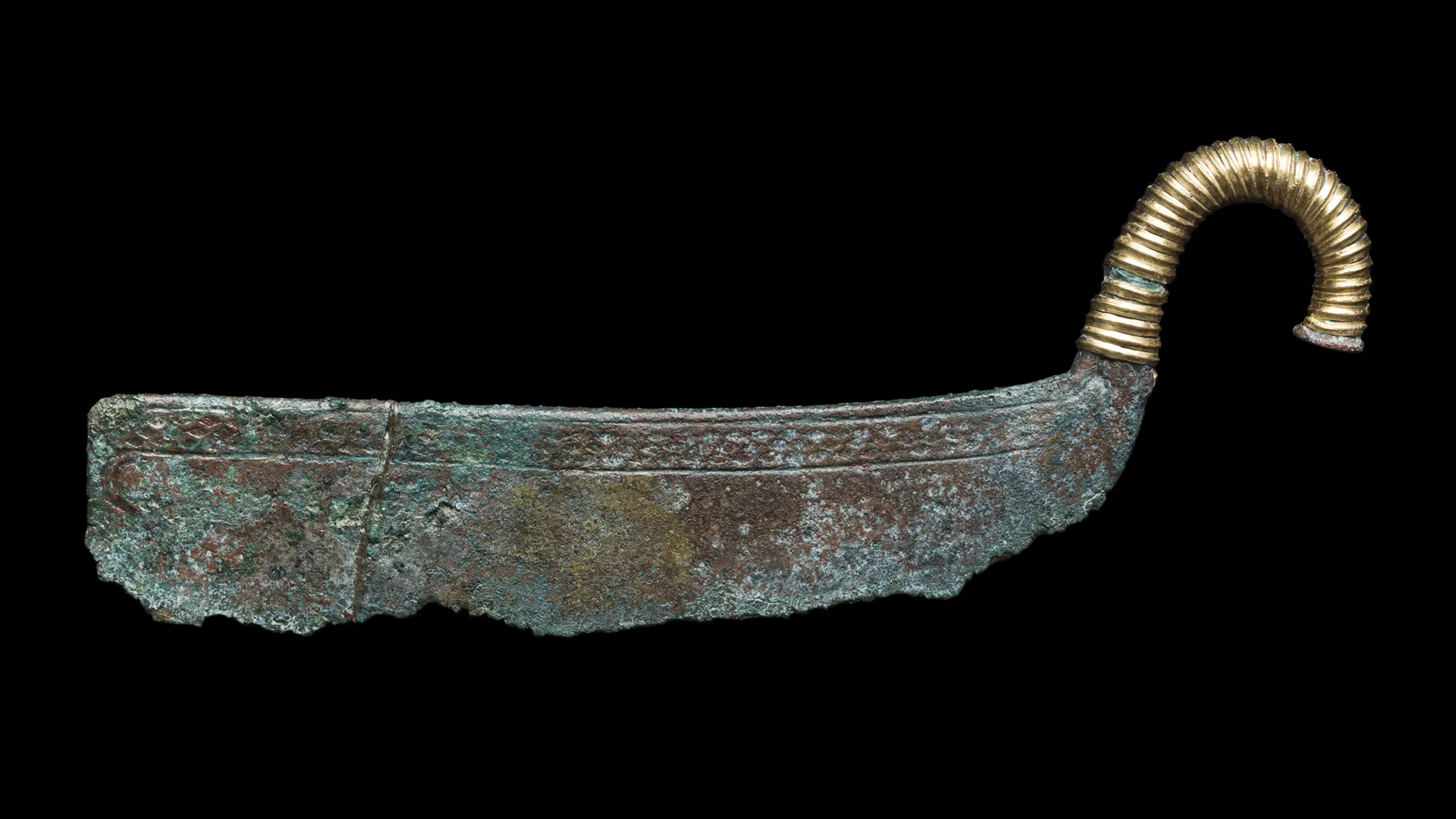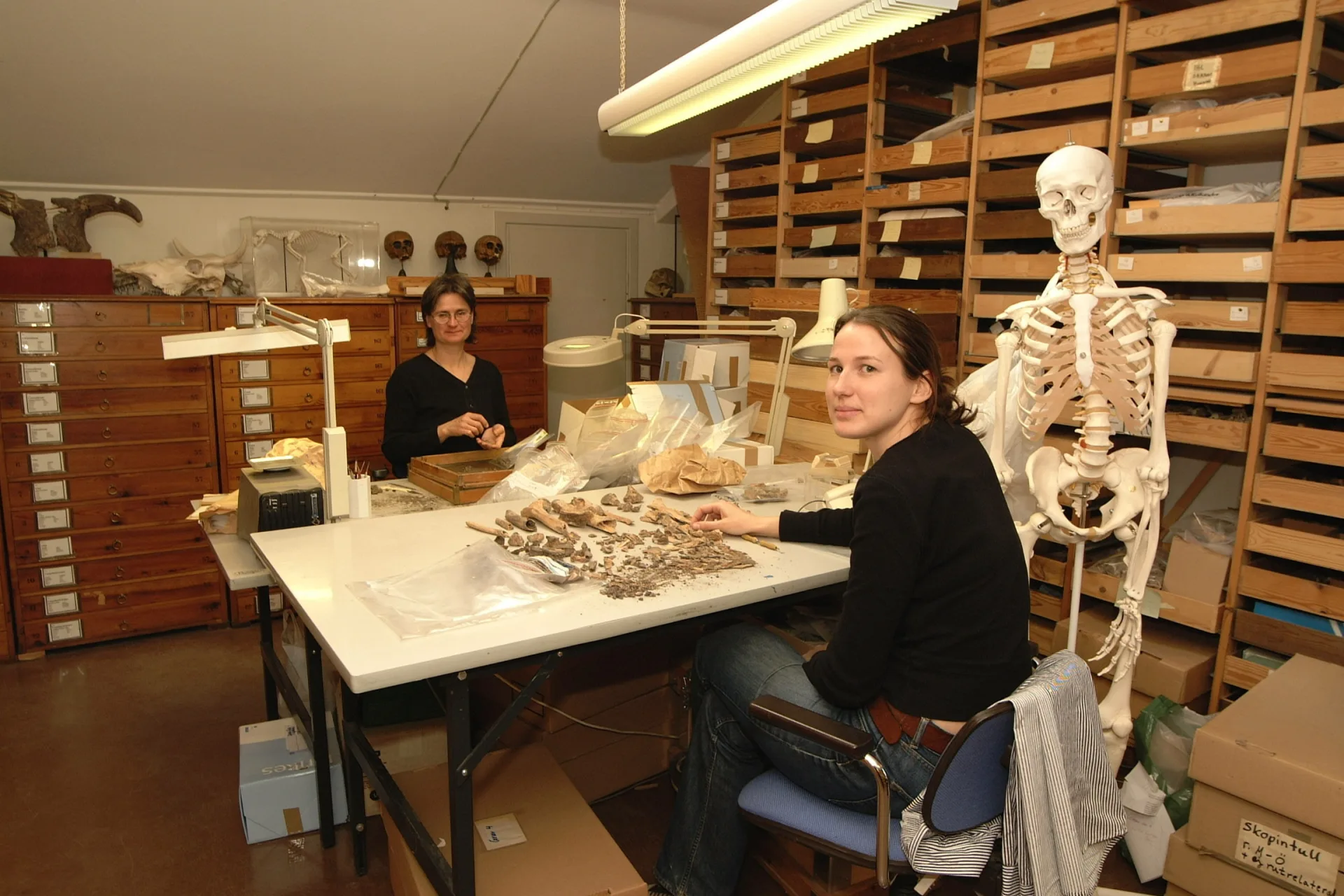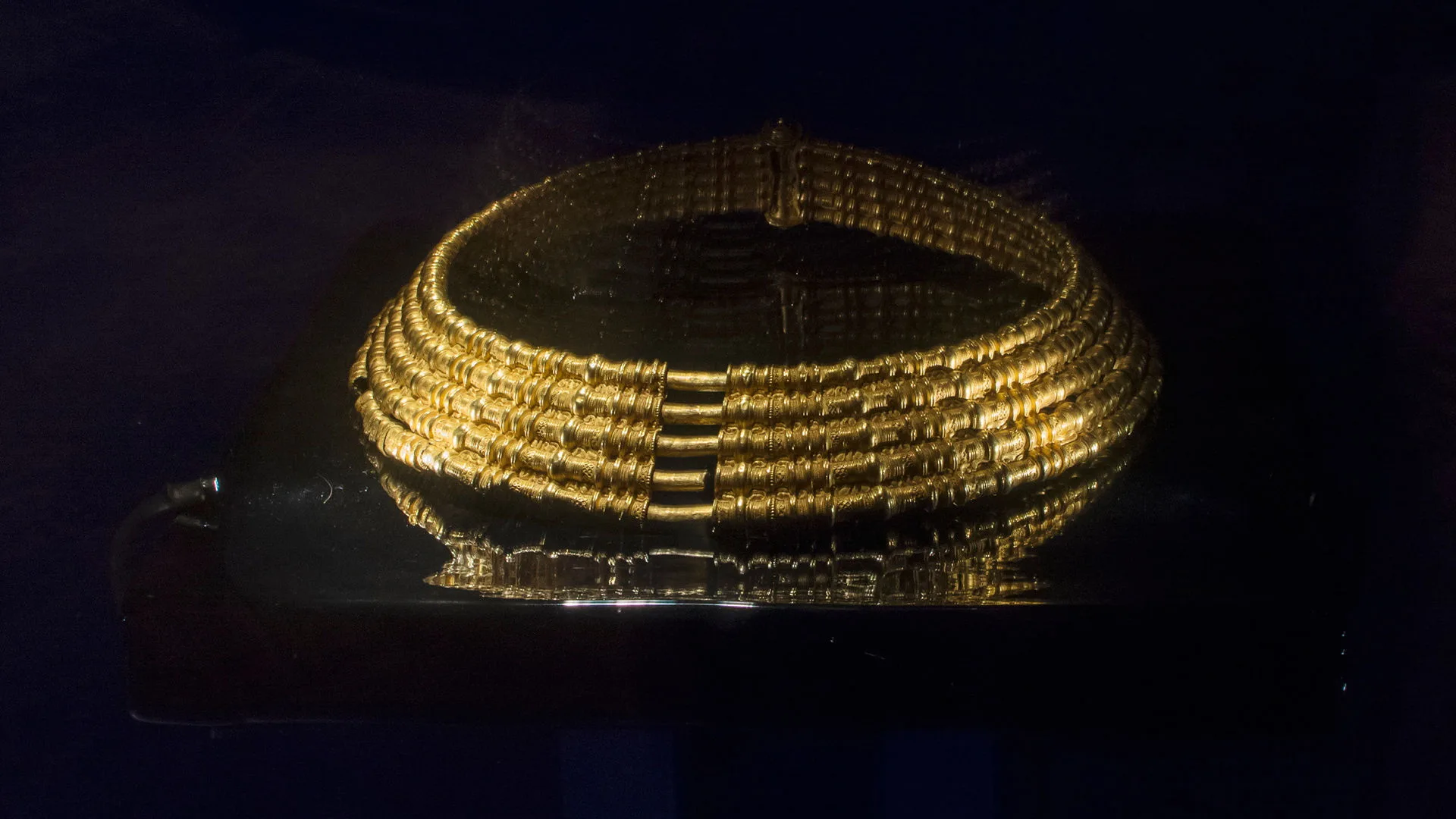The man from Granhammar
Stone Age
12,000 BC – 1700 BC
Bronze Age
1700 BC – 500 BC
Iron Age
500 BC – AD 1100
Thanks to modern technology, experts have been able to determine what he looked like, what he ate, and where he lived during different stages of his life. His skeleton is preserved in the collections of the Swedish History Museum.

He died in a violent axe fight after arriving by boat from the south to the Mälaren region. He fell into the water and sank to the bottom of the inlet. A ditch digger discovered his remains in 1953 at Granhammar, about 30 kilometres northwest of Stockholm. The murder weapon was never found.
From his skull, researchers have reconstructed his facial features: a man with broad cheeks and a prominent nose with a bump on the bridge. He was tall, around 1.80 metres.

Skeleton of the man from Granhammar
For reasons unknown, the man from Granhammar ended up in a fight and received multiple blows to the upper arm, head, and face. The injuries suggest he fought back. There are no cuts on his back or spine, which implies he didn’t try to flee. His left arm suffered several axe wounds, while the right arm shows none, possibly indicating he was defending himself with an axe in his right hand.
DNA analysis reveals that he belonged to a farming population, as he was lactose tolerant—able to digest milk as an adult. His eyes were likely blue. At the time of his death, his teeth on the right side were severely worn down, he suffered from a chronic jaw infection, and his right arm showed signs of long-term wear and strain.

Found alongside tools
Next to the skeleton lay a flint hide-scraper from the Kristianstad area. There were also finely crafted, sharp tools. The toolkit included a chisel, and a delicate awl made of bronze with a wooden handle. A sandstone whetstone was found as well, likely used for sharpening the tools.








